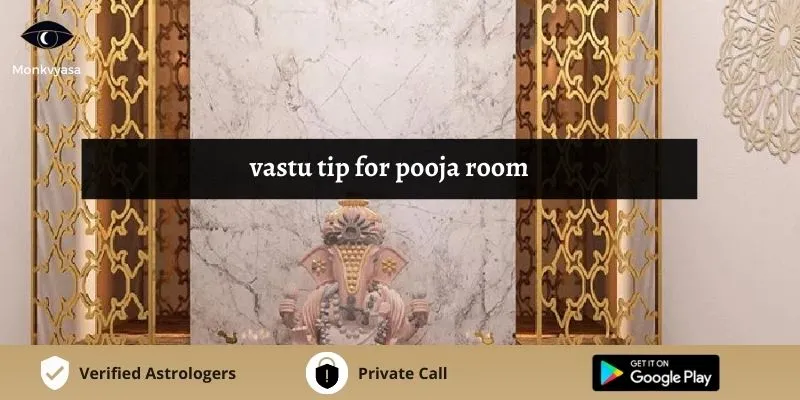

Having positive energy in your pooja room is crucial for attaining a tranquil and meditative state. The pooja room, as per vastu shastra, significantly promotes positivity in your home. Unfortunately, not everyone is familiar with vastu principles. Hence, to assist you, we have gathered some of the top pooja room vastu tips for your abode.
Vastu emphasizes the significance of the pooja room's location in creating its positive energy. The northeast direction is considered the best for pooja room as per vastu, followed by the east and north. If you have the ability to determine the location of your pooja room while constructing a new home, it's advisable to steer clear of the basement or upper floors. The optimal placement for your mandir is on the ground floor
Vastu recommends a low ceiling for your pooja room. A pyramid-shaped or gopura-like roof can help establish a positive environment. Additionally, incorporating a threshold and a two-door entrance, if feasible within your home, can enhance the vastu benefits.
When the design and structure of your pooja room are finalized, it's time to position your deity's statue. According to vastu, the ideal spot should be a few inches away from the wall and at least six inches from the floor. It's also important to remember that images of the deceased and artwork depicting violence should not be displayed in your pooja room.
Where to keep your religious books, lamps, and pooja-related items? As per vastu, storage should always face the southeast direction. It's also crucial to avoid placing any items above the deity's statue to comply with pooja room vastu guidelines.
Also Read: Vastu shastra For Office : Guide For Office Direction As Per Vastu.
One key pooja room vastu consideration is the room's color. Opt for light hues such as white, light blue, or light yellow to foster a peaceful atmosphere. If you choose marble, white, pale yellow, or ochre is also appropriate color options.
Who doesn't love a well-lit room, especially a pooja room? Given that it is often a small space in your home, sufficient lighting is essential. Supplement the light from your diyas with a window facing the northeast direction, if possible. If not, use ample artificial light as an alternative.
As per Hindu mythology, gods assume human form and thus require privacy like anyone else. Vastu dictates that adding doors to your pooja room is essential. Additionally, incorporating a threshold helps keep your pooja room pure and free from impurities.
Vastu suggests decorating your pooja room with metallic accents, particularly brass. Keeping a copper vessel filled with water in the room helps absorb negativity and regulate positive energy, eliminating negative influences in your home.
Vastu advises aligning or positioning your pooja room in the living room or kitchen, with the latter being ideal if it is located in the northeast part of your home. Placing the pooja room in your bedroom is also acceptable, as long as it is in the northeast, and take care to not face the pooja unit while sleeping.
The northeast is considered the most favorable direction for the pooja room, and the north and east are also suitable. Facing west may be acceptable, but facing south is not recommended as per vastu principles.
If you lack space for a separate pooja room, you can place the mandir in your living room, provided it is located in the northeast direction of your home as per Pooja Room Vastu guidelines.
According to Pooja Room Vastu, the deity's face should always be directed towards the northeast, regardless of the direction the pooja room is facing. For more Essential Tips consult our certified Astrologers.
Follow us on Instagram and Youtube for more Astrological videos.